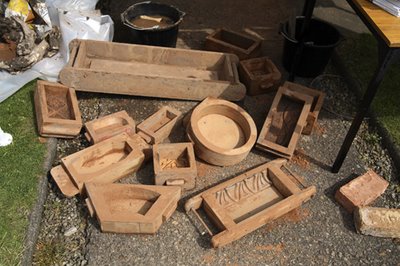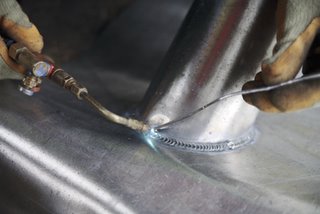 Handmade Brick Moulds courtesy of York Handmade
Handmade Brick Moulds courtesy of York Handmade
Over the weekend I went on a SPAB (Society for the Protection of Ancient Buildings) regional event at Kings Manor in Yorkshire organised by Ray Wilson of the Spab Yorkshire Regional Group. It was a magnificent event which was well attended.
I am a member of SPAB and also lucky enough to be a freelance photographic contributer to their magazine Cornerstone.
I had a wonderful day meeting like minded people who have a love for our historic built environment.
The day was split into two halves. In the morning I visited the skills and crafts exhibition attended by members of the York Consortium For Conservation and Craftsmanship, and in the afternoon we had a tour of the Masons Loft, Chapter House Roof and East Front of York Minster. I took quite a few photographs and over the next few days I will introduce you to some of the things that I saw.
The first 'stall' I visited at the skills event was a brick making demonstration by York Handmade. As well as the quality of the handmade bricks, I thought it was fascinating to see both the original pattern moulds and the end result:-


Many people think that bricks are a recent material used for construction, but they have been used for thousands of years - in fact you can see evidence of Roman Bricks in the wall surrounding the ruins of Saint Mary's Abbey.
More photo's from the event tomorrow...
There are more events organised by the SPAB Yorkshire Regional Group including visits to Kirkstall Abbey in May, Nostell Priory and Knedlington Old Hall in June, and Darnall Crucible Shops in September.
SPAB website is here
Conservation Courses at University of York Kings Manor
You can view all of my images of York Minster here
You can view all of my images of York here
Note: Unfortunately I did not get all the names people and companies who attended the event. Members can be viewed at the York Consortium For Conservation and Craftsmanship, or if you took part, please drop me a line and I will gladly give an honourable mention to companies and people shown in the photos.
























